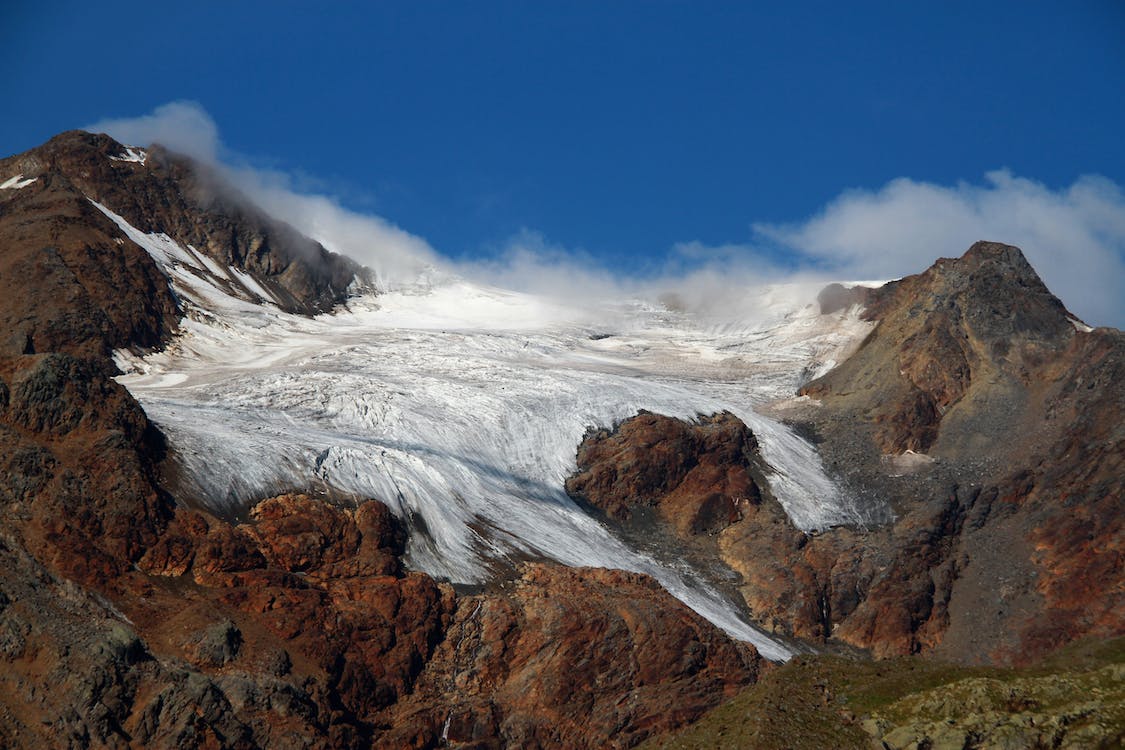Illimani Mountain
Location: Washington, USA
Elevation: 3, 285 meters
Mt. Baker is an isolated active stratovolcano that dominates the skyline of the Northern Cascade range in America. It has been active for the last 100 centuries, having erupted 13 times and the recent being in 1883. From 1975 to 1976, it released heavy steam without blowing up nor releasing any lava discharge. History recorded Mt. Baker spewed out at least one pyroclastic flow, two lava flows, four tephra eruptions, and eight lahar flows. Lahar flows have remained the most considerable hazard of the volcano that resulted in massive fish kills. Two main reasons aggravate the lahar threats. First, pyroclastic flows during eruptions can melt the snow creating torrents of ash and rock moving the slope downwards. Second, hot water and steam weaken the volcano’s soil mobilizing muddy lahars even on the slightest tremors.
The mountain’s summit is covered with glaciers, ranking second after Mt. Rainier in the most volume of snow and ice covers. It is no surprise that Mt. Baker is one of the snowiest places in the world. In 1999, the Mt. Baker’s ski area was reported to have the heaviest snowfall in a single season. The Baker’s summit, named Grant Peak, is a 1300-foot ice mound cloaking the volcano’s crater. To its south lies a smaller, partially ice-covered crater known as Sherman Peak formed by periodic steam eruptions.
About the trek
Mt. Baker offers a variety of ice and alpine adventures, but the most notable is its world-class trekking experience. Most agencies have options for varying degrees of technical difficulties, making it a perfect choice for both beginners and advanced climbers. The most popular routes to the summit are the Coleman Glacier, Easton Glacier, and the best-selling, North Ridge.
Climbing via the North Ridge route requires traversing across complex glaciers and steep mountain walls coupled with a few vertical ice climbing. The North Ridge only allows climbers that have basic ice climbing and alpine self-rescuing skills. The time required is one to two days. The North Ridge shares the same trailhead as the Coleman route. From there, you will be climbing a 50-degree snow slope to the ridge crest. The next stop after the crest is the base of an ice cliff. The cliff marks the start of a challenging 60-85 degrees slope. You must pitch until you reach the plateau of the summit.
The trek highlights the Northwest Alpines’ panoramic view and the unique experience of climbing a glaciated Pacific ice-covered volcano.
When is the best time for the climb
The climb is available nearly year-round. Although May and September generally have better ice and snow conditions. In earlier seasons, you have to adjust to the deep snow from the previous winter. In later seasons, you need to navigate the maze of crevasses from the Coleman trailhead carefully.
How long is the hike to Mt. Baker summit
It would take at least three days to reach the summit depending on the group’s pace and weather conditions. Day one begins with a three-hour drive from Seattle to Heliotrope Ridge trailhead on the northern side of the mountain. Heliotrope Ridge is a well-graded trail providing easy access to the alpine lands. It also sits at an 1128-meter elevation, helping you acclimatize to higher altitudes. From the trailhead, you will be approaching the base camp at either the Harrison (aka Mirkwood) or towards the higher Coleman Glaciers. The four-hour hiking route takes you to mature cedar and hemlock forests, alpine meadows, and deep snow-covered trails. You can reach the base camp before the sunset. This gives trekkers ample time to practice pitches for the trickier ice climbing of the vertical seracs tomorrow.
Day two begins with a pre-dawn walk along large crevasses to reach the foot of the North Ridge. Further up, the central ridge section starts to become steep. You will have to transition from walking above glaciers to roped climbing. Climbers must head out towards the east where an ice bulge is waiting. Here, you will start belaying a few short pitches at 60-85 degrees, then climb. Next is another glacier travel and traversing steep icy slopes until the plateau summit. It would typically take nine to 12 hours. You will be rewarded with the spectacular views of the Cascade Range from the summit.
After a short time, you will head towards the west, crossing the Mt. Baker’s summit. You will start descending the Roman Wall to the saddle between the Black Buttes and, finally, the route to Coleman Glaciers. It will be an easy descent towards the lower mountain at the Coleman base camp. There you can stay the night for an evening alpenglow. The remaining days will be a descend to Heliotrope Ridge trailhead. Alternatively, you can enjoy other activities like alpine ice climbing or ice skiing.
How much does the hike cost
Depending on the trekking agency, the cost of the hike is around 900-1650 USD. Other services require you to deposit at most 50% of the travel cost. Costly tours generally include meals during the trek, transportation to and from the trailhead, park and guide fees, human waste disposal bags, and equipment rentals such as ropes, stoves, tents, and ice protection.

